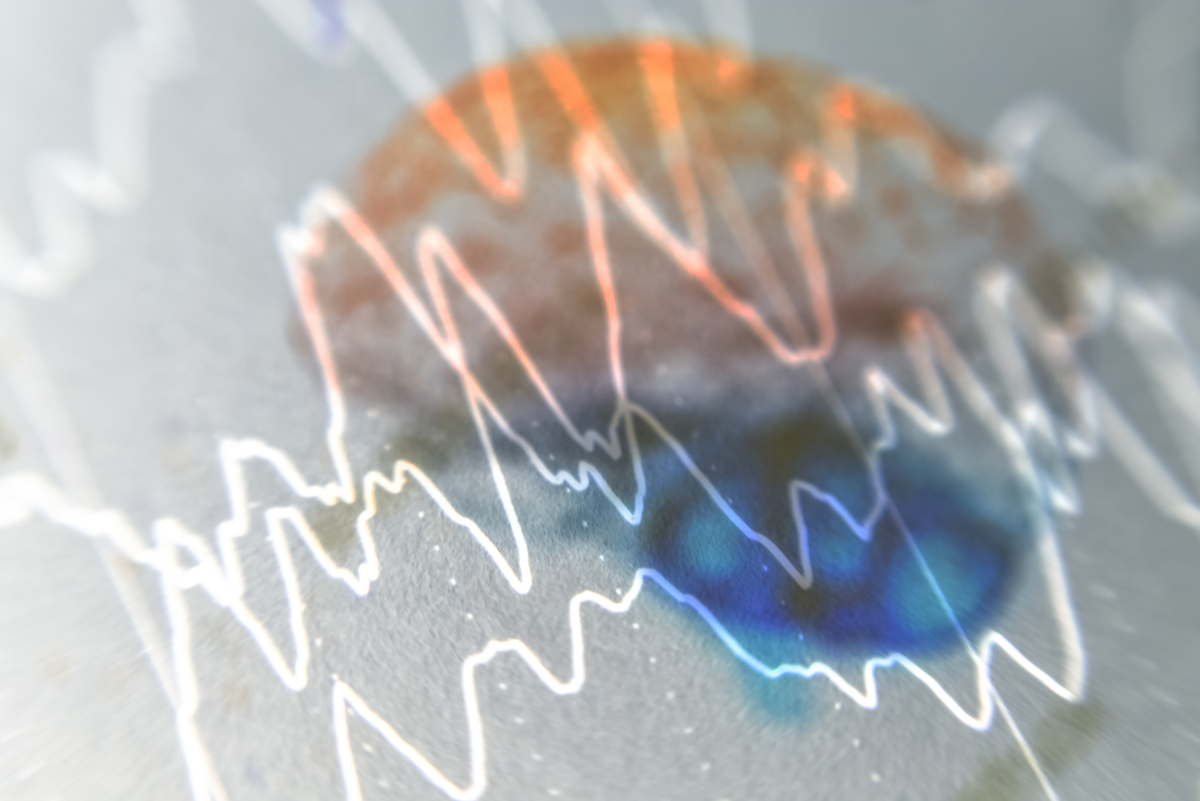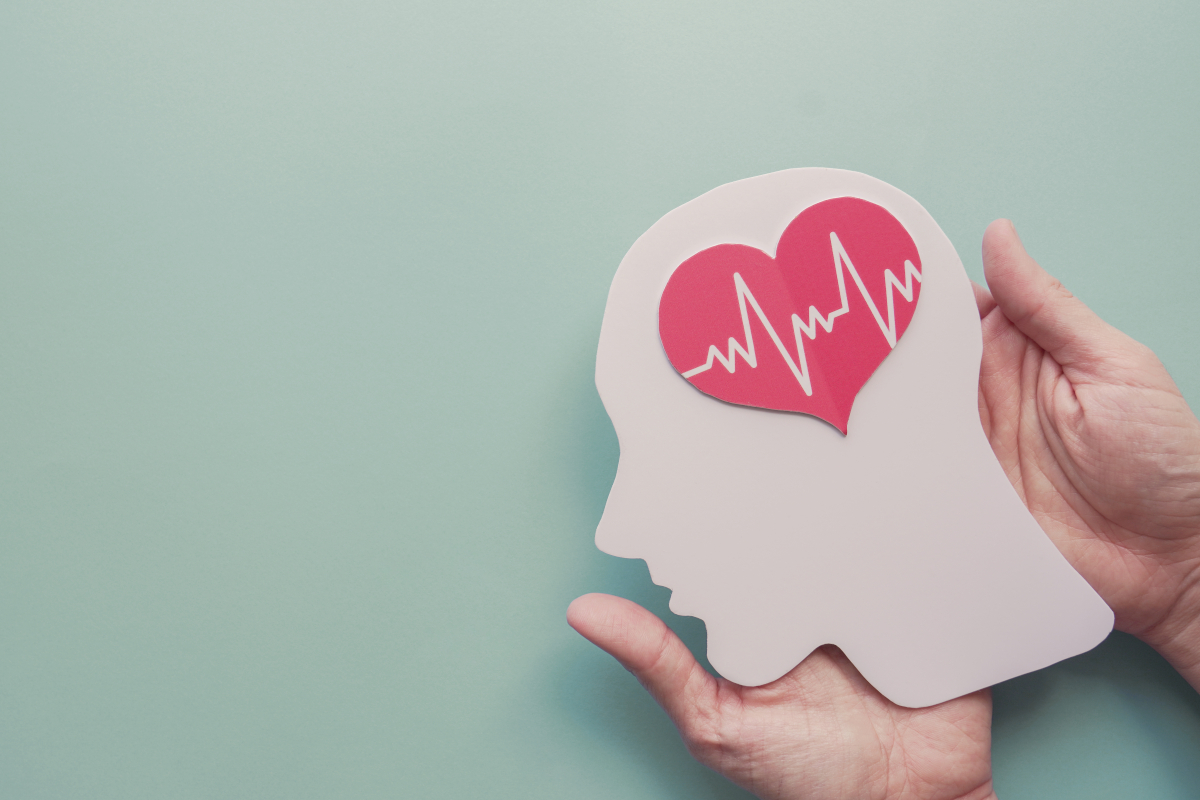COVID passes, the headache stays
Gut zwei Jahre nach dem Ausbruch der Corona-Pandemie, die für eine lange Zeit die ganze Welt lahmlegen sollte, konnte endlich das Ende dieser Heimsuchung verkündet werden. Die Erleichterung auf dem gesamten Globus war groß. Das Virus war damit nicht aus der Welt. Aber es hatte nach Einschätzung von Expert:innen seinen pandemischen Schrecken verloren und war in einen endemischen Zustand übergegangen. Nun sollte die Zeit des Aufbruchs, des Wieder-Anknüpfens an das alte Leben beginnen.
Around two years after the outbreak of the coronavirus pandemic, which had the whole world paralysed for a long time, the end of this nightmare could finally be announced. The relief around the entire globe was great. Now, the time had come for a new start, for picking up the threads of life from beforehand. Sadly, this was not the case for everyone. For some of those infected with COVID, the virus had a more long-term impact, beyond the acute infection and sickness. The umbrella term ‘long COVID’ brings together a group of very different symptoms, which continue to burden affected people even after their apparent recovery.
-
References
Azzolini E, Levi R, Sarti R, Pozzi C, Mollura M, Mantovani A, Rescigno M. Association Between BNT162b2 Vaccination and Long COVID After Infections Not Requiring Hospitalization in Health Care Workers. JAMA. 2022 Aug 16;328(7):676-678. doi: 10.1001/jama.2022.11691. PMID: 35796131; PMCID: PMC9250078.
Bamps L, Armenti JP, Bojan M, Grandbastien B, von Garnier C, Du Pasquier R, Desgranges F, Papadimitriou-Olivgeris M, Alberio L, Preisig M, Schwitter J, Guery B, The RegCOVID Study Group. Long-Term Consequences of COVID-19: A 1-Year Analysis. J Clin Med. 2023 Apr 3;12(7):2673. doi: 10.3390/jcm12072673. PMID: 37048757; PMCID: PMC10095027.
Bowles S, Hickman J, Peng X, Williamson WR, Huang R, Washington K, Donegan D, Welle CG. Vagus nerve stimulation drives selective circuit modulation through cholinergic reinforcement. Neuron. 2022 Sep 7;110(17):2867-2885.e7. doi: 10.1016/j.neuron.2022.06.017. Epub 2022 Jul 19. PMID: 35858623; PMCID: PMC10212211.
Byambasuren O, Stehlik P, Clark J, Alcorn K, Glasziou P. Effect of covid-19 vaccination on long covid: systematic review. BMJ Med. 2023 Feb 1;2(1):e000385. doi: 10.1136/bmjmed-2022-000385. PMID: 36936268; PMCID: PMC9978692.
Chhabra N, Grill MF, Singh RBH. Post-COVID Headache: A Literature Review. Curr Pain Headache Rep. 2022 Nov;26(11):835-842. doi: 10.1007/s11916-022-01086-y. Epub 2022 Oct 5. PMID: 36197571; PMCID: PMC9533267.
Chippa V, Aleem A, Anjum F. Post-Acute Coronavirus (COVID-19) Syndrome. 2023 Feb 3. In: StatPearls [Internet]. Treasure Island (FL): StatPearls Publishing; 2023 Jan–. PMID: 34033370.
Fujita K, Otsuka Y, Sunada N, Honda H, Tokumasu K, Nakano Y, Sakurada Y, Obika M, Hagiya H, Otsuka F. Manifestation of Headache Affecting Quality of Life in Long COVID Patients. J Clin Med. 2023 May 18;12(10):3533. doi: 10.3390/jcm12103533. PMID: 37240639; PMCID: PMC10219375.
Leng A, Shah M, Ahmad SA, Premraj L, Wildi K, Li Bassi G, Pardo CA, Choi A, Cho SM. Pathogenesis Underlying Neurological Manifestations of Long COVID Syndrome and Potential Therapeutics. Cells. 2023 Mar 6;12(5):816. doi: 10.3390/cells12050816. PMID: 36899952; PMCID: PMC10001044.
Lippi G, Sanchis-Gomar F, Henry BM. COVID-19 and its long-term sequelae: what do we know in 2023? Pol Arch Intern Med. 2023 Apr 19;133(4):16402. doi: 10.20452/pamw.16402. Epub 2023 Jan 9. PMID: 36626183.
Monje M, Iwasaki A. The neurobiology of long COVID. Neuron. 2022 Nov 2;110(21):3484-3496. doi: 10.1016/j.neuron.2022.10.006. Epub 2022 Oct 7. PMID: 36288726; PMCID: PMC9537254.
Notarte KI, Catahay JA, Velasco JV, Pastrana A, Ver AT, Pangilinan FC, Peligro PJ, Casimiro M, Guerrero JJ, Gellaco MML, Lippi G, Henry BM, Fernández-de-Las-Peñas C. Impact of COVID-19 vaccination on the risk of developing long-COVID and on existing long-COVID symptoms: A systematic review. EClinicalMedicine. 2022 Aug 27;53:101624. doi: 10.1016/j.eclinm.2022.101624. PMID: 36051247; PMCID: PMC9417563.
Robertson MM, Qasmieh SA, Kulkarni SG, Teasdale CA, Jones HE, McNairy M, Borrell LN, Nash D. The Epidemiology of Long Coronavirus Disease in US Adults. Clin Infect Dis. 2023 May 3;76(9):1636-1645. doi: 10.1093/cid/ciac961. PMID: 36542514.
Rochmawati E, Iskandar AC, Kamilah F. Persistent symptoms among post-COVID-19 survivors: A systematic review and meta-analysis. J Clin Nurs. 2022 Nov 25. doi: 10.1111/jocn.16471. Epub ahead of print. PMID: 36426658.
Rodrigues AN, Dias ARN, Paranhos ACM, Silva CC, Bastos TDR, de Brito BB, da Silva NM, de Sousa EJS, Quaresma JAS, Falcão LFM. Headache in long COVID as disabling condition: A clinical approach. Front Neurol. 2023 Mar 23;14:1149294. doi: 10.3389/fneur.2023.1149294. PMID: 37034080; PMCID: PMC10076861.
Roever L, Cavalcante BRR, Improta-Caria AC. Long-term consequences of COVID-19 on mental health and the impact of a physically active lifestyle: a narrative review. Ann Gen Psychiatry. 2023 May 11;22(1):19. doi: 10.1186/s12991-023-00448-z. PMID: 37170283; PMCID: PMC10174610.
Szabo S, Zayachkivska O, Hussain A, Muller V. What is really 'Long COVID'? Inflammopharmacology. 2023 Apr;31(2):551-557. doi: 10.1007/s10787-023-01194-0. Epub 2023 Mar 25. PMID: 36964860; PMCID: PMC10039447.
Tana C, Bentivegna E, Cho SJ, Harriott AM, García-Azorín D, Labastida-Ramirez A, Ornello R, Raffaelli B, Beltrán ER, Ruscheweyh R, Martelletti P. Long COVID headache. J Headache Pain. 2022 Aug 1;23(1):93. doi: 10.1186/s10194-022-01450-8. PMID: 35915417; PMCID: PMC9340759.
Teodoro T, Chen J, Gelauff J, Edwards MJ. Functional neurological disorder in people with long COVID: A systematic review. Eur J Neurol. 2023 May;30(5):1505-1514. doi: 10.1111/ene.15721. Epub 2023 Feb 22. PMID: 36719069.
Wong AC, Devason AS, Umana IC, Cox TO, Dohnalová L, Litichevskiy L, Perla J, Lundgren P, Etwebi Z, Izzo LT, Kim J, Tetlak M, Descamps HC, Park SL, Wisser S, McKnight AD, Pardy RD, Kim J, Blank N, Patel S, Thum K, Mason S, Beltra JC, Michieletto MF, Ngiow SF, Miller BM, Liou MJ, Madhu B, Dmitrieva-Posocco O, Huber AS, Hewins P, Petucci C, Chu CP, Baraniecki-Zwil G, Giron LB, Baxter AE, Greenplate AR, Kearns C, Montone K, Litzky LA, Feldman M, Henao-Mejia J, Striepen B, Ramage H, Jurado KA, Wellen KE, O'Doherty U, Abdel-Mohsen M, Landay AL, Keshavarzian A, Henrich TJ, Deeks SG, Peluso MJ, Meyer NJ, Wherry EJ, Abramoff BA, Cherry S, Thaiss CA, Levy M. Serotonin reduction in post-acute sequelae of viral infection. Cell. 2023 Oct 9:S0092-8674(23)01034-6. doi: 10.1016/j.cell.2023.09.013. Epub ahead of print. PMID: 37848036.






















